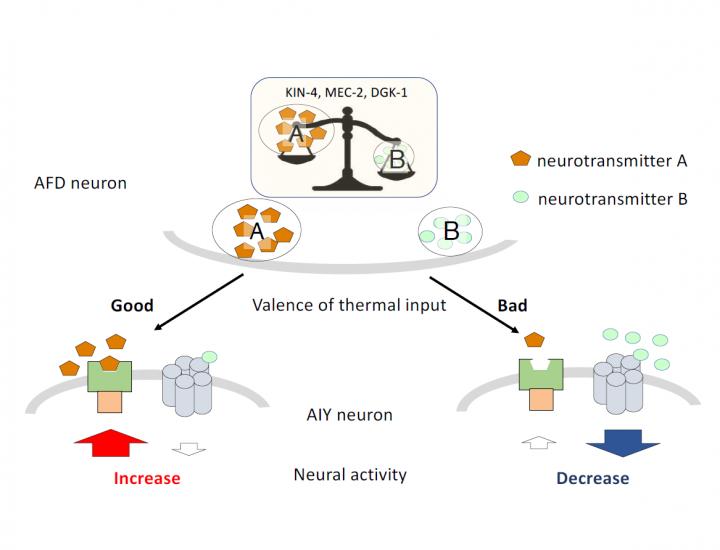
Credit: Shunji Nakano & Ikue Mori
Nagoya University researchers and colleagues have revealed the nerve circuitry regulating the response of a tiny soil worm to changing temperatures. The findings, published in the journal Proceedings of the National Academy of Sciences, help clarify one way the nervous system translates external signals into behaviours.
One of the fundamental questions of neurobiology is: how does the brain determine if an external stimulus is good or bad? Animal behaviour depends on this ability. For example, the scent of a predator elicits a fear response, while the scent of a potential mate elicits mating behaviour.
The nematode Caenorhabditis elegans is about one millimetre long and lives in the soil, feeding on microbes. It is often used as a model organism for biological studies in diverse fields, such as development, neurobiology and aging.
Generally, a lab C. elegans will migrate towards a cooler temperature when placed in a warmer environment than the one it was cultivated in, and vice versa. Molecular neurobiologists Shunji Nakano and Ikue Mori of Nagoya University and colleagues wanted to understand the molecular and neurological underpinnings behind this behaviour.
Using genetic and imaging tools, the scientists found that a temperature-sensing nerve cell in the worms, called AFD, transmits signals that activate or inhibit its receiving nerve cell, called AIY.
The scientists exposed freely moving worms to either a good or bad external temperature stimulus. The first ‘good’ signal started below the worms’ cultivation temperature and gradually warmed towards it. The other ‘bad’ signal started at the cultivation temperature and gradually warmed above it.
AFD was activated by both warming signals. But it then sent stimulating molecules to AIY in the case of the good signal, and inhibiting ones during the bad one. The result shows how the same nerve cell can send signals that convey opposite messages.
Genetic studies further revealed three specific genes, and the enzymes and proteins they encode, that are involved in this response: kin-4, mec-2, and dgk-1. “These three genes are evolutionarily conserved in mammals, including humans,” says Nakano. “A similar mechanism thus might be present in the nervous systems of higher organisms.”
The team next plans to identify other stimuli that elicit similar neuronal responses in C. elegans.
###
Media Contact
Shunji Nakano
[email protected]
Original Source
http://en.
Related Journal Article
http://dx.




